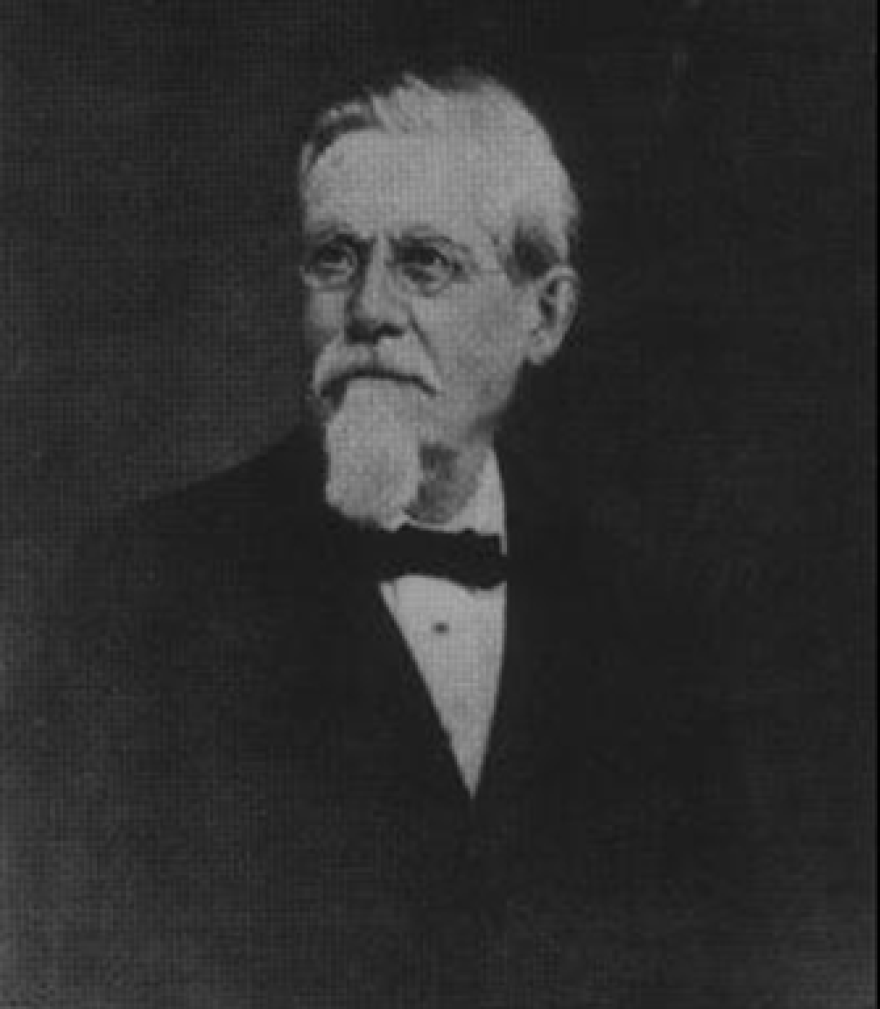There isn’t a soccer fan on earth who is unfamiliar with the Mexican national anthem, and how stirring it sounds when tens of thousands of Mexico fans sing “¡Mexicanos, al grito de guerra!” at stadiums around the world. But how many know that this rousing tune was written by a Buffalonian?
Jaime Nunó Roca, who composed the anthem, lived a remarkable life in three nations. He spent most of the last portion of it in Buffalo.
Nunó was born into a poor family in Catalonia in 1824; his birth name was Jaume, the Catalan form of Jaime. At age 5, he lost his father to a snakebite, and at 9, he lost his mother to cholera. He was taken in by an uncle who lived in Barcelona, joined the army, and became a military bandleader. Transferred from Spain to the Spanish colony of Cuba in 1851, Nunó befriended the exiled Mexican caudillo Antonio López de Santa Anna. Two years later, Santa Anna, reinstated as Mexican president, made him the leader of the nation’s military bands… just in time to take part in the contest to compose Mexico’s national anthem. In 1854, Nunó won, with a composition set to the words of the Mexican poet Francisco González Bocanegra. Right from its debut performance, Nunó’s Himno Nacional Mexicano was a hit… a fitting expression of Mexico’s soaring national fervor.
In 1855, Santa Anna was deposed from power. Everyone associated with the self-proclaimed Hero of the Nation, General of Division, Grand Master of the National and Distinguished Order of Guadalupe, Grand Cross of the Royal and Distinguished Spanish Order of Carlos III, and President of the Mexican Republic fell out of favor, including the national anthem, which was no longer performed, and, not surprisingly, its foreign-born composer. So Nunó moved to New York City, where there was plenty of work for a composer of Nunó’s caliber. There, he worked as a conductor, most notably leading the orchestra in support of the wildly popular Austrian piano virtuoso Sigismund Thalberg, and later directing Thalberg’s operas. As a composer, Nunó also wrote more than 300 pieces.
In 1869, after years of hectic touring, Nunó, now calling himself James Nunó, moved to Buffalo, where he became one of only about 30 city residents from Spanish-speaking countries. At this point, he was content to disappear from the international music scene, although he was very active locally, organizing choirs and music festivals. In 1874, at the age of 50, he married a 20-year-old Buffalonian, Catherine Remington. They had two children together, and over the ensuing years, Nunó made ends meet as a music teacher with a small studio on Delaware Avenue. His work took him and his family to Rochester for three years and to New York City for five, but they always wound up back in Buffalo.

By the time of the Pan-American Exposition in 1901, Nunó, now 77, had lived in Buffalo for a quarter-century. During that time, another strongman named Porfirio Díaz, very much in the mold of Santa Anna, ruled Mexico as dictator; he brought Nunó’s Himno Nacional back into favor.
Back in Buffalo, a Mexican journalist learned that the half-forgotten composer of the national anthem was alive and still working somewhere on Delaware, in the city hosting the Pan-Am. An effort was mounted to find him. According to some accounts, a Mexican regimental band marched up and down the avenue playing the anthem, hoping to draw out Nunó. Eventually, he appeared. Soon after, the Mexican pavilion at the Pan-Am held a gala reception in his honor.
Thus began the coda to Nunó’s remarkable life. The news that he was still alive caused a sensation in Mexico. Porfirio Díaz invited him to return, which he did that September amid thunderous acclaim. He remained for three months; one of the most memorable moments took place when Nunó triumphantly led a group of massed military bands.
In 1904, Nunó, 80, returned to Mexico to help mark the 50th anniversary of the Himno Nacional, his final stay in his first adopted country. He returned to his second adopted country to live out his last years in Buffalo and New York City. Nunó, 84, died in New York in 1908. He was buried at Forest Lawn, although it would not be his final resting place. In 1942, his remains were removed and reinterred in the Rotunda of Illustrious Men in Chapultepec Park in Mexico City. There, Jaime Nunó Roca---aka James Nunó, Buffalonian---rests among the great men and women who built modern Mexico.
====================================================================================
Cast (in order of appearance):
Bandleader: Alejandro Gomez
Jaime Nunó: Rolando Gomez
Narrator: Susan Banks
Sound recording: Brandon Nightingale
Sound editing: Micheal Peters
Mexican national anthem, Part I: Performed by the Turkish Army Band, Ankara, Dec. 17, 2013 (Kral Kuşçu, YouTube.com)
Mexican national anthem, Part II: Performed by 100,000 Mexico fans at the Estadio Azteca, Santa Ursula, Mexico City, July 10, 2011 (FIFA TV)
Produced by the Niagara Frontier Heritage Project
Associate producer: Karl-Eric Reif
Webpage written by Jeff Z. Klein (Niagara Frontier Heritage Project)
Special thanks to:
Kathryn Larsen, vice president, content distribution, Buffalo Toronto Public Media
S.J. Velasquez, director of audio strategy, Buffalo Toronto Public Media
Jerry Urban, senior radio broadcast engineer
Council Member Mitchell P. Nowakowski and the City of Buffalo for their generous support.


